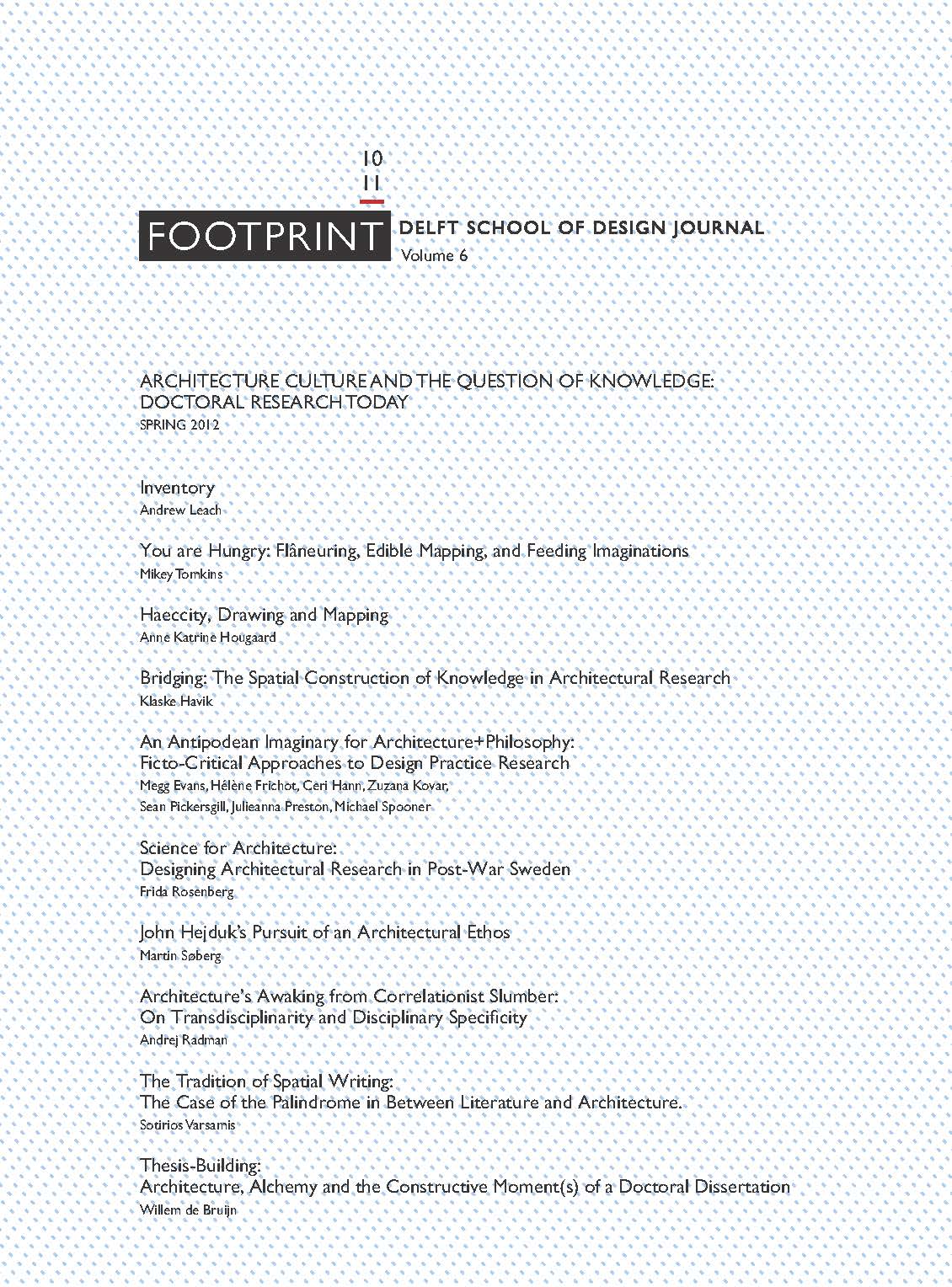Science for Architecture: Designing Architectural Research in Post-War Sweden
DOI:
https://doi.org/10.7480/footprint.6.1-2.752Abstract
How did architectural research in Sweden become scientific in its approach rather than artistic, as architecture education in the post-war period was primarily influenced by the Bauhaus pedagogy? Via the American Bauhaus pedagogical developments taking place at the IIT and the GSD, Swedish architecture education adopted the artistic ‘learning by doing’ approach.
The most interesting structure signifying this was a permanent exhibition of building materials located in the foreground of the 1957 KTH architecture school. When the new KTH architecture school was completed its architecture illustrated another image: that of the new architecture curriculum, A68, put into practice the same year as the building was designed. A68 reorganized architecture education and put more focus on environmental studies and building function analysis.
The new curriculum included the subjects Formlära, Design Principles, and Byggnadsfunktionslära, Building Function Analysis, which were technical in their approach of using empirical research. As a result, the 1969 KTH architecture building included a laboratory for testing technical problems in air-conditioned spaces as well as a laboratory for testing acoustics. The 1961 LTH architecture building included a full-scale-laboratory where studies were directed by Carin Boalt, the first female professor at a technical university.
Downloads
Published
Issue
Section
License
- Authors retain copyright and grant the journal right of first publication with the work simultaneously licensed under a Creative Commons Attribution License that allows others to share the work with an acknowledgement of the work's authorship and initial publication in this journal.
- Authors are able to enter into separate, additional contractual arrangements for the non-exclusive distribution of the journal's published version of the work (e.g., post it to an institutional repository or publish it in a book), with an acknowledgement of its initial publication in this journal.





